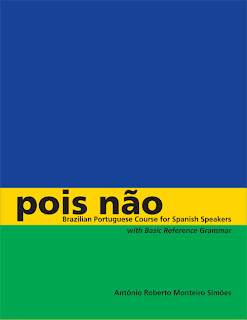This film, released in 2002, received critical acclaim, was nominated for 4 Academy Awards, and is ranked 18 on IMDB's Top 250 films as voted by users.
In spite of its fame, I had avoided this film because I knew it was violent, and I wasn't sure I wanted to see yet another film about drug dealers and crime in the favelas. However, if you're going to watch Brazilian films, it's almost impossible to avoid these topics, and the fact that the film was so highly reviewed finally convinced me to watch it. I'm very glad that I did.
First of all, the film is violent and almost all of the action takes place in the Cidade de Deus, one of Rio's favelas. There are a lot of guns, and a lot of shooting, and perhaps the most disturbing aspect of the film is the degree to which very young kids (and I mean young: 8 and 9 year-olds) are involved in the shooting.
The film also shows the widespread corruption of the police force, a theme echoed in "Tropa de Elite" and "Tropa de Elite 2," which I will review separately.
But "Cidade de Deus" is much more than just another grim film about the seemingly insoluble problems of outrageous income disparity and the grinding poverty which makes drug trafficking a reasonable choice for so many kids in the favelas. This film tells a story, with the narrator, "Buscapé," drawing the viewer into his world and making it accessible in a way that no other film about this topic has done.
The action starts from the opening of the film, where we see a high-school aged Buscapé walking down a street in the Cidade de Deus with a new camera, his friend at his side. The action stops short just as shots are about to be fired, and we then view a series of extended flashbacks, going back to the 1960s and moving forward. We meet a series of interesting characters, many of them portrayed by players who were recruited from the favelas which are the subject of the film.
The direction and cinematography are both excellent, making the film seem almost like a documentary, without sacrificing aesthetics. Composition, lighting, and other elements often missing in a documentary make the film visually appealing, in spite of the squalid surroundings.
The story also has humor, largely due to Buscapé's ability to tell his story in a lively and engaging way. His resilience, and that of some of the other characters, keep the viewer from becoming depressed by the constant killing.
There are a lot of guns in this film, and there's a lot of shooting. The main "bad guy," Zé Pequeno, is a sadistic sociopath, but Buscapé doesn't waste a lot of time bemoaning this fact. Instead, he describes Zé's actions from a logical, almost business-like standpoint. He doesn't glorify, excuse, or rationalize, but he doesn't demonize, either.
The film ends on a tentative high note, at least for Buscapé, but the final scene shows a group of very young kids toting guns and listing off all the people they're planning to kill.
I read quite a few of the reviews for this film on Amazon, because I was curious to see how an American audience would react to it. The film has a very high rating on Amazon, with an average of 4 and half stars. That's based on 341 reviews, an extremely large number for a foreign film. Of those reviews, 269 are 5 stars, 45 are 4 stars, and only 27 total reviews are 1 through 3 stars. Most of the negative reviews criticize the film for excessive violence, which at first seems like a reasonable objection.
However, as the documentary that is one of the extra features on the Blu-Ray release makes clear, the film is not exaggerating anything. In fact, it's based on a true story. The documentary shows actual kids who are involved in the gangs as they proudly display the various weapons that they use. It also includes a fairly long interview with the head of Rio's police department (who left the force shortly after the documentary was filmed, to run for political office).
It's difficult for someone like me, a foreigner who has never lived in Brazil, to know how closely a film like "Cidade de Deus" reflects reality, but based on the documentary, it was a very faithful and honest depiction, at least of the situation at the time the film and documentary were made.
The film looks great in high definition, and the 5-channel soundtrack is excellent and sounds good. Aside from the documentary, there are no extra features, but the documentary is quite good, although it was shot in standard definition.
The English subtitles are very clear and easy to read.
This is one of the best Brazilian films that I have seen so far. If it had just been another drug war film with lots of shooting and violence, it would be forgettable, but it's a great film because it does what a great movie must do: it tells a fascinating story and it does it in a way that grabs the viewer's interest from the beginning, and doesn't let it go until the very end.
Availability:








